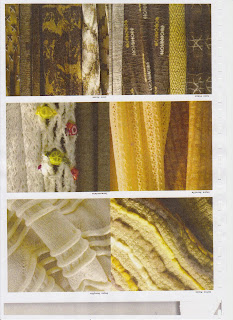I began my research by investigating a variety of stitch patterns i.e rib stitch, moss stitch, cable stitch, tubular knitting etc. I then, using books, magazines and internet access, researched the guidlines on how to create these particular stitches.I selected numerous images to reference my theory. I also researched various fashion designers who use or have used these knit techniques in their collections.


By studying other fashion designers' knitwear, I found that the most common knit techniques used were ribbing, shaping (increasing and decreasing), loop stitching and tubular knitting.
 Loop Stitch
Loop StitchIt is possible to produce a looped pile or shaggy-like fabric using the the loop stitch technique. I, personally, admire the purpose of this technique as it enables me to visualise a fluffy yet rugged texture. It also provides fullness and quality craftship to the fabric piece.
 Rodarte, Spring 2005
Rodarte, Spring 2005 Rib Stitch
Rib Stitch Sandra Backlund, a swedish fashion designer, is well known for her origami inspired knitwear. Much of her knit techniques refer back to those I have studied. Tubular knitting and ribbing can be easily identified within her designs. I love how she creates volume and form using these patterns and techniques.




thanks 4 sharing..:)
ReplyDelete